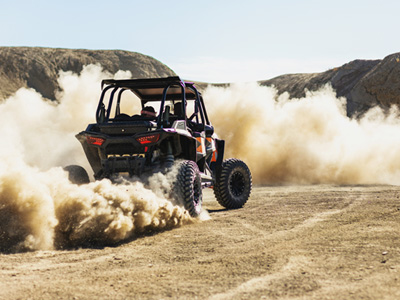ATV
Battery Buying Guide
Choosing the Right ATV Battery
Looking for the right battery for your Honda, Polaris, Can-Am, Yamaha or other brand ATV? Batteries Plus carries flooded, AGM and lithium powersport batteries from trusted brands like Xtreme, Duracell and X2Power. Shop our selection of ATV batteries designed to meet or beat original equipment specifications for cold cranking amps (CCA), reserve capacity (RC), and amp-hour (Ah).
- Cold Cranking Amps - The rating that determines a battery's ability to start an engine in cold temperatures.
- Reserve Capacity - How long a new fully charged battery can hold its charge.
- Amp Hour - A measure of how long a battery can provide amperage for one hour.
What Type of ATV Battery Do You Need?
Flooded
Flooded lead acid batteries are the most affordable ATV battery, but tend to have shorter lifespans than AGM or lithium batteries. They also require additional maintenance.
Since flooded batteries are not completely sealed, they lose water due to evaporation when they are recharged. If you have a flooded battery, you may need to offset this water loss by periodically adding distilled or deionized water. Otherwise, the battery's plates can become corroded, shortening the battery's lifespan.
Top 4 ATV Batteries
Extreme Flooded
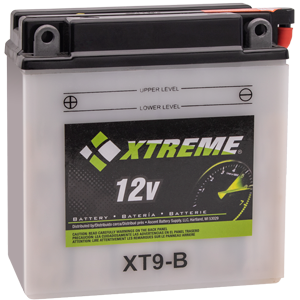
Good
- 6 Month Warranty
- Basic Flooded
- Low Maintenance
Extreme AGM
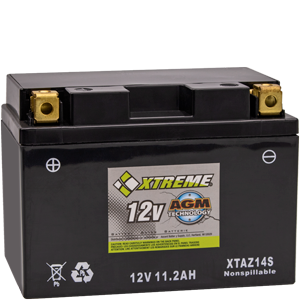
Better
- 12 Month Warranty
- AGM Technology
- Maintenance Free
- Vibration Resistant
Duracell AGM
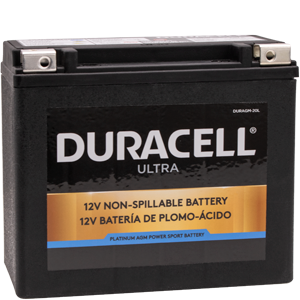
Best
- 24 Month Warranty
- AGM Technology
- Maintenance Free
- Vibration Resistant
X2Power Lithium
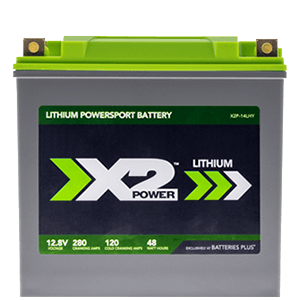
Ultimate
- 36 Month Warranty
- Lithium Technology
- Maintenance Free
- Vibration Resistant
- Holds a Charge in Storage
ATV Battery Care & Maintenance
No matter what type of battery you choose for your ATV, it won't work properly if it isn't maintained, especially during the off-season. Follow these tips to maintain and get the longest life possible out of your battery.
1. Keep It Charged - Use a battery charger to maintain your ATV battery during the off-season or other long periods of inactivity.
Note: Lithium batteries have a low self-discharge rate and may require less charging maintenance during the off-season. Keep your lithium battery at around 50% when storing it for long periods of time.
2. Use the right charger - It's important that you select one that matches the voltage and chemistry of your ATV battery.
Example: 12-volt AGM charger goes with a 12-volt AGM battery.
3. Avoid overcharging - Overcharging your ATV battery can shorten its life. Prevent this by using a battery maintainer or a charger with an automatic shut-off.
4. Water your battery - If you have a flooded battery, periodically check and top off the electrolyte inside with distilled or deionized water.
Note: Do not attempt to do this with an AGM or lithium battery.
5. Keep terminals free of corrosion - Clean off corrosion on the battery terminal using a battery terminal brush and a mixture of baking soda and water. Protect the terminals with an anti-corrosion spray.
ATV FAQs
ATVs require powersport batteries like those found in motorcycles and snowmobiles. There are several different powersport battery chemistries available, including flooded, AGM and lithium. Which type of battery you choose is a matter of personal preference. For more information on the advantages of each battery type, see the section entitled "What Type of ATV Battery Do I Need?" above.
The series of letters and numbers on the side of your ATV battery are the battery's reference code, which can help tell you what type of battery you have. A typical ATV battery code will look something like this: XTA14AH-BS.
In this type of code, the first 3 letters (in this case XTA) represent the manufacturer. The numbers (14) tell you the battery's power output. A higher number indicates a higher power output.
The last two letters indicate whether or not the battery is completely sealed. "BS" stands for "Bottle Supplied" which indicates that the electrolyte is stored in a separate container and added to the battery when it's ready to be activated.
"FA" refers to a "Factory Activated" battery which is filled with the electrolyte, sealed and charged at the factory. These batteries must be used within a specific period of time and cannot be stored indefinitely.
If your battery has a different code or you have additional questions, the experts at your nearest Batteries Plus location would be happy to help.
Cold Cranking Amps (CCAs) measure how well a battery functions in cold conditions. The higher the number of CCAs a battery has, the more effectively it should perform in extremely cold weather.
The correct CCA rating for your ATV will depend largely on the climate that you're using it in. In general though, a battery with 500 CCA or more should have no problem starting an ATV engine even when the temperature drops below zero.


